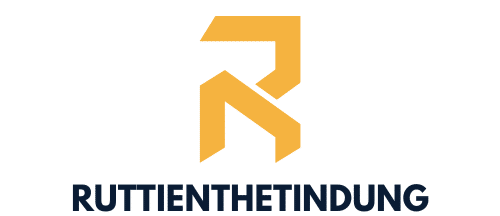Imagine a scenario where a crime hasn’t happened yet, but law enforcement agencies are already gearing up to prevent it. Sounds like a science fiction plot? Well, it’s not. It’s a reality in the rapidly evolving world of predictive policing. With the rise of artificial intelligence (AI) and big data, policing agencies are increasingly relying on predictive systems that use algorithms to anticipate potential crime hotspots and individuals likely to engage in criminal activities. But as these technologies permeate the field of justice and law enforcement, there are significant ethical considerations that come to the fore.
The Intricacies of Predictive Policing Systems
Predictive policing is a technology-driven approach where data analysis and intelligence are leveraged to predict potential criminal activity. These systems use data about past crimes, such as type, location, and time, combined with other factors like social-economic data, to make informed predictions.
Also to see : Can virtual reality simulations aid in training healthcare professionals for complex surgeries?
However, while the efficiency of predictive policing is indisputable, these systems also raise questions about bias, privacy, and human autonomy. As a crime prevention tool, predictive policing must navigate these ethical considerations to foster a system of justice that respects both the rights of individuals and the need for effective law enforcement.
The Risk of Bias in Predictive Policing
One of the significant ethical considerations in using AI for predictive policing is the risk of bias. The algorithms that power predictive policing systems use historical crime data to make predictions. However, if the historical data carries any inherent bias, the predictions will not be impartial.
In parallel : How do you choose the best CRM connector for your needs ?
For instance, if a particular neighborhood was over-policed in the past, leading to a higher number of recorded incidents, predictive algorithms might identify this area as a high-risk zone, perpetuating a cycle of over-policing. This could result in unfair targeting and profiling, disproportionately affecting certain communities.
There’s also a risk of bias in the design and implementation of predictive policing algorithms themselves. If the designers of the algorithms hold any unconscious biases, these could inadvertently be incorporated into the system. This form of algorithmic bias could result in discriminatory practices even if the system is based on neutral principles.
Privacy Concerns in Predictive Policing
The use of big data and AI in predictive policing also raises significant privacy concerns. Predictive policing systems often use a vast array of data sources, including personal information and public records.
Some predictive systems might incorporate data about individuals’ online activities, social relationships, and personal histories, posing a risk to personal privacy. The availability, use, and potential misuse of such data for predictive purposes is an ethical minefield that needs to be navigated with care.
Another aspect is the lack of transparency in the workings of predictive policing algorithms. As policing agencies rely more on these technologies, there is a pressing need to ensure that individuals understand how their data is being used, and they have a say in it.
The Human Autonomy Aspect
Predictive policing presents unique challenges to the principle of human autonomy. In essence, it is about predicting and preventing crimes before they occur, potentially leading to situations where individuals are targeted based on what a machine predicts they will do.
The notion of pre-emptive intervention based on predictions can be seen as an infringement on an individual’s autonomy. It is one thing to use predictive policing as a tool to guide resource allocation, but using it to target individuals raises complex ethical questions.
Striking a Balance: The Role of Ethical Guidelines
Given the ethical challenges posed by predictive policing, it is clear that there is a crucial need for guidelines to ensure the ethical use of these technologies.
These guidelines should aim to minimize bias in predictive policing, both in the data used and in the design of the algorithms. Transparency about how predictive systems work, the data they use, and the basis for their predictions is indispensable.
Furthermore, the privacy rights of individuals must be safeguarded. While predictive policing systems need data to work effectively, they should not infringe upon an individual’s right to privacy. There must be stringent measures to protect personal data and ensure that it is used ethically and responsibly.
Lastly, the guidelines should address the challenge posed to human autonomy by predictive policing. They should ensure that predictive technologies are used as tools to aid human judgment, not replace it. It should never be forgotten that at the heart of the justice system is the human element, and no technological advancement should undermine it.
The Role of Artificial Intelligence in Predictive Policing
Predictive policing relies heavily on artificial intelligence and machine learning technologies. These technologies enable predictive policing systems to analyze vast quantities of data and identify patterns that could indicate potential criminal activity.
Artificial intelligence uses complex algorithms to learn from data and make predictions or decisions without being explicitly programmed to do so. In predictive policing, AI algorithms analyze historical crime data and other relevant information to predict where and when crimes are likely to occur. Machine learning, a subset of AI, enables these systems to improve and adapt over time by learning from their predictions and the outcomes.
The application of AI in predictive policing extends beyond predicting potential crime hotspots. It also comes into play in individual risk assessment, where AI can be used to predict an individual’s likelihood of reoffending. Some systems employ facial recognition technology to identify potential offenders, though this use has been met with significant ethical concerns.
While AI can make the criminal justice system more efficient and proactive, it’s not devoid of issues. Ethical implications include the risk of bias, infringement on individual rights, potential misuse of data collected, and concerns about transparency and accountability. These challenges need to be thoroughly addressed to make sure that the benefits of AI in predictive policing are reaped without compromising the ethical standards of the justice system.
Conclusion: Navigating the Ethical Challenges of Predictive Policing
In the digital age, predictive policing has emerged as a revolutionary tool in the arsenal of law enforcement agencies. It offers a proactive approach to crime prevention, enabling law enforcement to allocate resources effectively based on data-driven predictions. The potential benefits include reduced crime rates, improved public safety, and optimized use of law enforcement resources.
However, as predictive policing leverages artificial intelligence, big data, and machine learning, it also brings about ethical considerations that cannot be overlooked. Bias in data and decision-making algorithms, privacy concerns regarding data collection and use, and the impact on human autonomy are all pressing issues that require careful scrutiny.
Equal emphasis must be placed on the ethical implications of predictive policing as on its potential benefits. It’s crucial to strike a balance between leveraging technology for more effective law enforcement and upholding the pillars of justice – fairness, privacy, and respect for individual rights.
Guidelines and regulations must be established to ensure the ethical use of predictive policing technologies. Transparency and accountability should be at the forefront of these guidelines, with clear mechanisms for oversight and redress.
In the end, while predictive policing offers a promising avenue for modern crime prevention, its ethical concerns must be diligently addressed. Only then can this innovative tool truly contribute to a just and fair criminal justice system.











